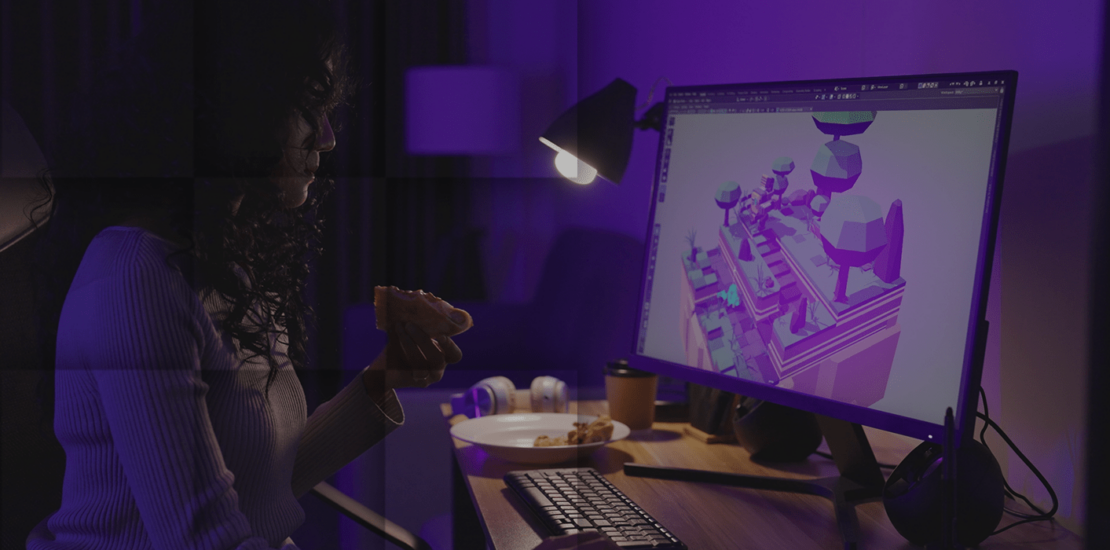- April 24, 2023
- Posted by: iXie
- Category: Game Development

The creation of three-dimensional objects, characters, and locations for use in video games is a challenging process known as 3D game art production. It combines art and technology, resulting in visually stunning and immersive game worlds that captivate players. In today’s gaming industry, high-quality 3D game art production is essential for creating successful and popular games. This comprehensive guide covers everything you need to know about 3D game art production, from the basics of concept art to the technical aspects of modeling and texturing.
Whether you’re a seasoned professional or a beginner looking to break into the industry, this guide will equip you with the essential knowledge and techniques needed to create captivating and memorable 3D game art. So, read on to acquaint yourself with this exciting and rewarding field of game development.
Contents
Understanding 3D Game Art Production
For anybody interested in pursuing a profession in game development, creating 3D game art is essential. To create immersive gaming experiences, virtual surroundings, and objects must be created. To produce aesthetically appealing and engaging games, 3D game art creation blends art and technology. Unlike 2D game art production, which creates objects and characters in two dimensions, 3D game art production involves the creation of three-dimensional models that can be viewed from different angles and in various lighting conditions.
The Stages of 3D Game Art Production
There are several stages involved in 3D game art production:
- Concept art creation: This is the initial step in the production of 3D game art. It entails generating and outlining concepts for the game’s environments, objects, and characters.
- Modeling: Once the concept art is finalized, the next stage is modeling. This involves using 3D modeling software such as Blender or Maya to create a 3D model based on the concept art.
- Texturing: In this phase, you give 3D objects color, texture, and surface features.
- Shading – It entails making 3D models appear like various materials, such as metal, wood, or glass.
- Rigging: It’s about building a framework of bones and controls to allow the movement of 3D objects or characters.
- Animation: This involves bringing 3D characters or objects to life by adding movement and motion.
- Lighting: Once the models are animated, the next stage is lighting. It involves setting up lighting and shadows for the game environment.
- Rendering: It entails polishing the models and pictures that will be used in the game.

Types of 3D Game Art Production
A variety of other forms of art production are also used in the creation of 3D games, including:
- Character art: It’s about creating believable people with distinctive personalities and qualities.
- Environment art: It includes creating environments, structures, and other game-related elements.
- Prop art: It involves producing smaller pieces like weapons, furniture, and other things that assist to bring the game environment to life.
Tools and Software for making 3D Game Art
Artists employ a range of equipment and programs to produce stunning 3D game graphics. Blender, Maya, ZBrush, Substance Painter, and other programs are among the most widely utilized in the sector. It is up to the artist to select the instrument that best meets their demands because each one has benefits and cons of its own.
The Role of the 3D Game Artist
A 3D game artist is a specialist in charge of producing 3D game assets using programs like Autodesk Maya, Blender, or 3ds Max. The artist should be proficient in both technical areas, such as 3D modeling and texturing, and aesthetic ones, such as having a strong eye for color, lighting, and composition. A 3D game artist is accountable for producing high-caliber game assets, making sure they adhere to technical specifications, and working with other team members to build the game.
The 3D Game Art Pipeline
The process of creating 3D game assets, known as the “3D game art pipeline,” includes several processes, ranging from concept art and sketching to rigging and animation. The pipeline is essential for assuring the successful and efficient creation of the game assets. The following steps are included in the 3D game art pipeline:
- Pre-production: The original concept for the game is created during pre-production, as is the visual aesthetic of the game. Concept art and sketching are used at this stage to help establish the game’s appearance and feel.
- Production: The majority of the labor is done during the production stage. The 3D models are produced, then they are textured, shaded, and animated. Specialized software is needed for this procedure, as well as expertise in 3D modeling, sculpting, and rigging.
- Post-production: When the manufacturing phase is over, the post-production phase starts. Here, the game’s finishing touches are applied. Iteration and testing are conducted to make sure the game is bug-free and operating as intended.
Best Practices for 3D Game Art Production
The following is what developers need to adopt for their games to appear great:
- Organizing game assets into specific folders and naming conventions can make it easier to locate specific files. This practice is especially useful for larger game development teams with multiple team members working on different assets at the same time.
- Prioritization and time management are essential for making sure that projects are finished on schedule and within budget. Prioritization helps to guarantee that the most crucial jobs are finished first while effective time management ensures that each work is given the right amount of time.
- For game assets to seem coherent and complement the game’s overall aesthetic, consistency in style and design is essential. To guarantee that all game assets are developed in compliance with the defined criteria, developers should construct a style guide at the outset of the project.
- Collaboration and communication are essential for working effectively with other members of the game development team. Developers should establish effective communication channels to keep everyone informed of progress, changes, and updates.

Final Thoughts
To create aesthetically appealing and engaging game environments, 3D game art production is a critical component of the gaming business. Production of 3D game art is now more crucial than ever because of the growing need for high-quality game graphics. To stay competitive and provide consumers with a top-notch gaming experience, game companies must continue to make investments in 3D game art development. By mastering the art of 3D game art production, game developers can create stunning and immersive game environments that transport players to new and exciting worlds.
Through this comprehensive guide, we have covered the basics of concept art, modeling, texturing, and more, giving you the essential knowledge and techniques needed to create breathtaking 3D game art. Remember, mastering the art of 3D game art production requires practice and dedication, but with hard work, you can become a master of this exciting field. So, start exploring and creating, and push the boundaries of 3D game art production to create unforgettable gaming experiences for players around the world. To help you in your quest here are some of the best 3D Art outsourcing studios in the industry.
